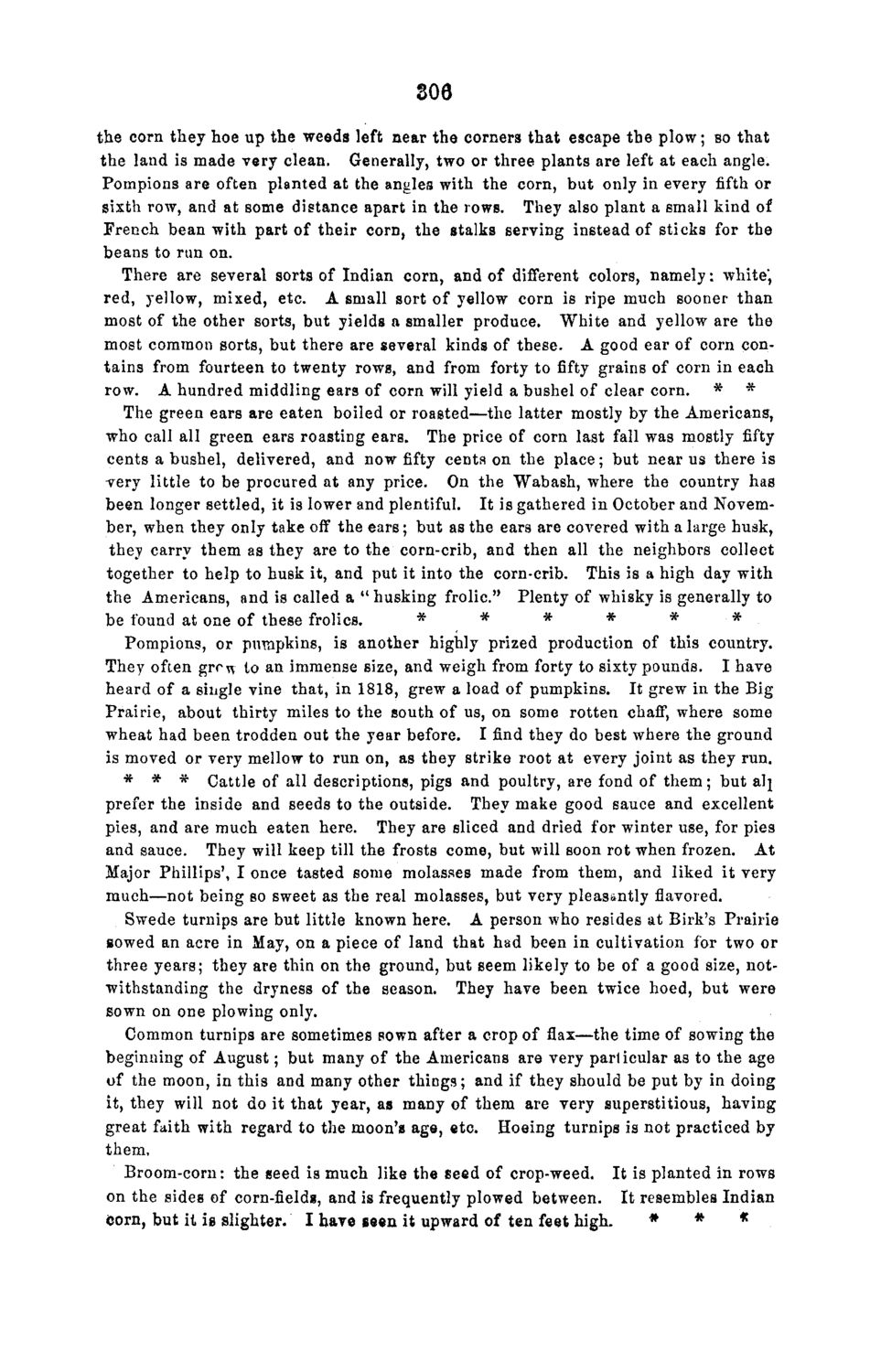| |
| |
Caption: Board of Trustees Minutes - 1868
This is a reduced-resolution page image for fast online browsing.

EXTRACTED TEXT FROM PAGE:
806 the corn they hoe up the weeds left near the corners that escape the plow; so that the land is made very clean. Generally, two or three plants are left at each angle. Pompions are often planted at the anglea with the corn, but only in every fifth or sixth row, and at some distance apart in the rows. They also plant a small kind of French bean with part of their corn, the stalks serving instead of sticks for the beans to run on. There are several sorts of Indian corn, and of different colors, namely: white', red, yellow, mixed, etc. A small sort of yellow corn is ripe much sooner than most of the other sorts, but yields a smaller produce. White and yellow are the most common sorts, but there are several kinds of these. A good ear of corn contains from fourteen to twenty rows, and from forty to fifty grains of corn in each row. A hundred middling ears of corn will yield a bushel of clear corn. * * The green ears are eaten boiled or roasted—the latter mostly by the Americans, who call all green ears roasting ears. The price of corn last fall was mostly fifty cents a bushel, delivered, and now fifty cents on the place; but near us there is very little to be procured at any price. On the Wabash, where the country has been longer settled, it is lower and plentiful. It is gathered in October and November, when they only take off the ears; but as the ears are covered with a large husk, they carry them as they are to the corn-crib, and then all the neighbors collect together to help to husk it, and put it into the corn-crib. This is a high day with the Americans, and is called a " husking frolic." Plenty of whisky is generally to be found at one of these frolics. * * * * * •* Pompions, or pumpkins, is another highly prized production of this country. They often grr\y to an immense size, and weigh from forty to sixty pounds. I have heard of a single vine that, in 1818, grew a load of pumpkins. It grew in the Big Prairie, about thirty miles to the south of us, on some rotten chaff, where some wheat had been trodden out the year before. I find they do best where the ground is moved or very mellow to run on, as they strike root at every joint as they run. * * * Cattle of all descriptions, pigs and poultry, are fond of them; but &]\ prefer the inside and seeds to the outside. They make good sauce and excellent pies, and are much eaten here. They are sliced and dried for winter use, for pies and sauce. They will keep till the frosts come, but will soon rot when frozen. At Major Phillips', I once tasted some molasses made from them, and liked it very much—not being so sweet as the real molasses, but very pleasantly flavored. Swede turnips are but little known here. A person who resides at Birk's Prairie sowed an acre in May, on a piece of land that had been in cultivation for two or three years; they are thin on the ground, but seem likely to be of a good size, notwithstanding the dryness of the season. They have been twice hoed, but were sown on one plowing only. Common turnips are sometimes sown after a crop of flax—the time of sowing the beginning of August; but many of the Americans are very parlicular as to the age of the moon, in this and many other things; and if they should be put by in doing it, they will not do it that year, as many of them are very superstitious, having great faith with regard to the moon's age, etc. Hoeing turnips is not practiced by them. Broom-corn: the seed is much like the seed of crop-weed. It is planted in rows on the sides of corn-fields, and is frequently plowed between. It resembles Indian corn, but it is slighter. I have seen it upward of ten feet high. # # *
| |